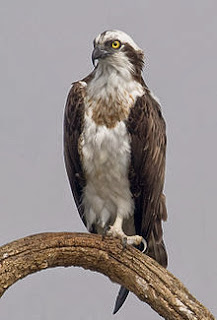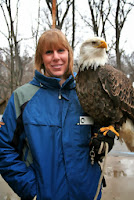Shop Green this holiday with World Bird Sanctuary's Gift Giving Guide!
PLUS: Scroll down for a coupon!
Make them smile this holiday season with a unique
heartwarming gift that makes a difference!
Your choice to
fulfill your holiday gift list from World Bird Sanctuary's selection of gifts
will provide you with unique, one-of-a-kind gifts that will have your friends
and family feeling special.
It
will also help the
World Bird Sanctuary to continue to fulfill our mission
through wildlife rehabilitation and environmental education.
Return to the Wild! Buy
a gift certificate for the release of a rehabilitated bird back into the wild.
Treating a wild bird of prey admitted to
our wildlife hospital can cost up to $1,000.
This special gift certificate entitles the recipient to take
part in the release of a rehabilitated bird back into the wild. Invite
family and friends to release a bird of prey at your home or nearby park.
The World Bird Sanctuary Wildlife
Hospital is a cornerstone of the World Bird Sanctuary, and is entirely funded
by donations from the public. Help us give our patients a second chance to fly.
Buy a Return to the Wild! Gift Certificate today!
$150.00.
Click here to order your Return to the Wild! Gift Certificate, or email Catherine Redfern
(link: credfern@worldbirdsanctuary.org), or call 636-225-4390 ext. 102
.
Help us Pave the Way! Buy-a-Brick and help us pave our amphitheater while
leaving a lasting impression of your environmental values!
The stairs are done! Next area to be paved with inscribed bricks--the amphitheater.
Your brick will be laid in our
amphitheater. Each year our environmental education programs teach
thousands of people how to make small everyday changes that will have a lasting
environmentally sustainable impact for years to come. Your purchase of
one of our engraved bricks will allow us to achieve this goal, while providing
you with a new and lasting way to recognize loved ones or commemorate special
occasions.
Options range from $125 - $425
Click here to order your Engraved Brick.
Adopt-a-Bird! Make someone special the proud adoptive
parent of one of over 200 animals at World Bird Sanctuary!
Acorn the Eastern Screech Owl is just one of the many animals available for adoption.
Your adoption fees help us to care for your animal for one year, as they live
at the Sanctuary and travel around the country, teaching thousands of people
about how to protect their friends in the wild and their habitats!
Your adoption packet includes a
Certificate of Adoption, photographs and natural histories of your adopted
animal and special visiting privileges.
Adoptions range from $25 - $150.
Click here to see our gallery of animals available for adoption.
Give the Gift of Friendship! A "Friend
of World Bird Sanctuary" Gift Subscription is the gift that keeps giving
all year!
Give the gift of friendship by giving your friends or family a gift
subscription as a World Bird Sanctuary Friend. WBS Friends receive
invitations to "Friends only" events, and a membership card gives
Friends a 10% discount on program fees at World Bird Sanctuary and on any item
in our gift shop.
"Friends" subscriptions range from $35 - $100. Click here to sign a friend or family member up for the "Friends" program.
Special gifts to Help our Wildlife Hospital! All
proceeds from the sale of these products go directly
to treating and caring for animals in our wildlife hospital.
”Save the Future” CD and "All Across The Watershed" CD
World Bird Sanctuary's in-house band, The Raptor Project,
has released two CDs,
Save the Future and All Across The Watershed. They consist of original songs about birds, the environment and taking care of
our planet. These fun and entertaining children's CDs comes with lyric
sheets and education sheets embedded in the CD.
Save the Future CD or All Along The Watershed CD - $12 plus $3 shipping and handling for each.
Click here to order.
Valid from November 29th to December 24th,
2013, only – shop in our gift shop and get 10% of all purchases on gift shop
items, Adopt a Bird packages and Friends Memberships. Not valid on Return to the Wild. Not valid for online purchases.
To print the coupon:
* MAC users--click on the image, hold down the mouse and drag the image to your desktop. Open the image and print as usual.
* PC users--hover the mouse over the image, click "Open Image in a New Tab"--it will open a new tab with just the image. Print as usual. Or alternatively--print the whole blog page and bring it in.
Thank you for considering World Bird Sanctuary when you
do your holiday gift shopping this year. For even more 'green gifts'
visit the World Bird Sanctuary gift shop,located in our Nature Center, where we
have many seasonal items and apparel for sale.
Submitted by Catherine Redfern, Director of Development,
World Bird Sanctuary.
.jpg)







































